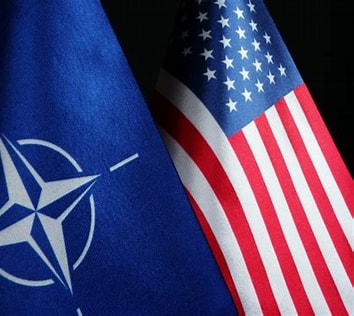
In a significant shift in transatlantic defense cooperation, the United States has relinquished its role as chair of the NATO-led group of key military allies. This decision marks a pivotal moment in NATO’s structure and strategy, raising questions about the future of U.S. leadership in European security.
Since NATO’s inception, the U.S. has played a central role in guiding the alliance’s military and strategic decisions. The position of Supreme Allied Commander Europe (SACEUR), traditionally held by an American four-star officer, has been a symbol of the U.S. commitment to NATO’s collective defense. However, recent developments suggest a reevaluation of this longstanding arrangement.
The Trump administration’s decision to step back from chairing the Ukraine Defense Contact Group—a gathering of defense ministers from 30 countries—signals a broader shift in U.S. priorities. This move is part of a cost-saving restructuring exercise within the U.S. Armed Forces and reflects a strategic pivot towards addressing challenges in the Pacific region.
Additionally, the lack of support for a U.S.-proposed peace plan and Ukraine’s continued backing in its war against Russia may have influenced this decision. The U.S. peace plan, which aimed to end the conflict, faced resistance from Ukraine and European allies, who remained committed to supporting Ukraine’s sovereignty and territorial integrity. This divergence in priorities has highlighted the complexities of maintaining unity within NATO while addressing differing perspectives on conflict resolution.
The implications of this change are profound. NATO’s deterrence strategy relies heavily on its members’ perception of unified military strength and commitment. The absence of U.S. leadership in key roles could inject uncertainty into this perception, potentially undermining the alliance’s ability to deter aggression, particularly from Russia.
European allies, including the UK and Germany, have stepped up to fill the leadership void, taking over chairing responsibilities within the Ukraine Defense Contact Group. While this demonstrates a willingness among European nations to shoulder greater responsibility, it also underscores the need for a cohesive and convincing deterrence posture.
This transition comes at a critical juncture, as NATO faces mounting challenges in the form of Russian aggression and evolving global security dynamics. The alliance must navigate these complexities while ensuring that its collective defense remains robust and credible.
The U.S. decision to step back from its leadership role in NATO raises important questions about the future of transatlantic relations and the balance of power within the alliance. As European allies take on greater responsibilities, the world will be watching to see how NATO adapts to this new era of shared leadership and strategic realignment.



